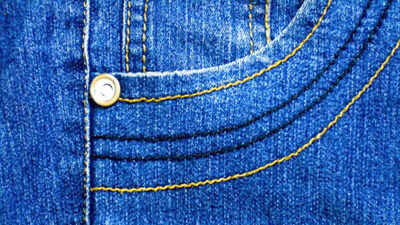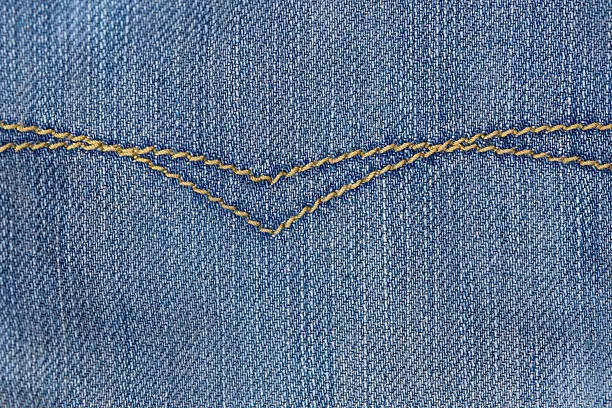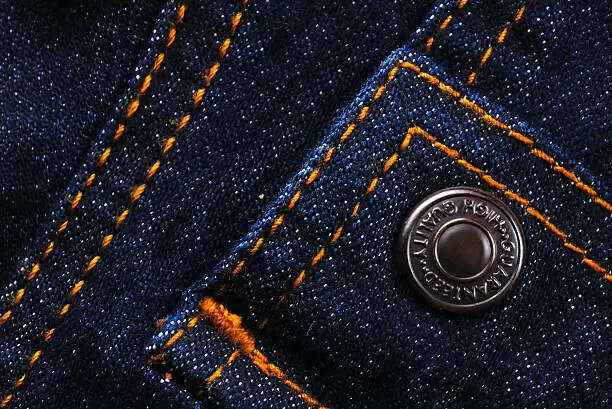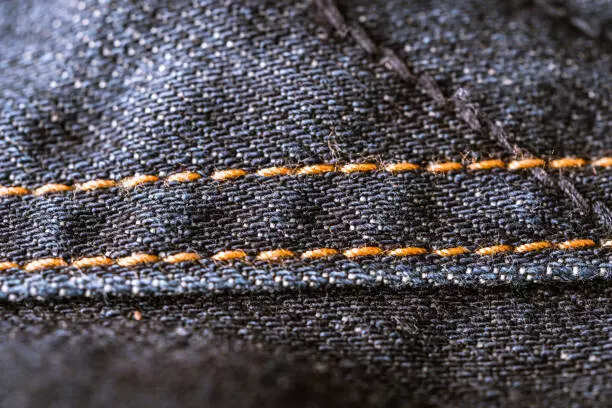ARTICLE AD BOX

Yellow stitching on jeans has a long history. It started as a practical choice for durability in workwear. Over time, this golden thread became a recognizable design feature. It transitioned from functional necessity to a symbol of rebellion and cool. Today, it remains a classic element in denim fashion worldwide, including in India.
If you open your wardrobe right now, chances are there’s at least one pair of jeans staring back at you. Blue, black, ripped, flared, high-waisted, jeans have become such an everyday essential that we rarely stop to notice their smallest details.
But look closely, and you’ll find something fascinating: almost every pair has that signature yellow stitching running along the seams and pockets. Why yellow, though? Who decided this golden thread should be the universal accent of denim? Let’s unravel this story, one stitch at a time.
Where it all began
Our journey starts in the rugged landscapes of 19th-century America, where denim wasn’t about fashion at all. It was about function.
The first jeans were stitched for gold miners, cowboys, and railway workers who needed sturdy workwear that could survive long hours in the heat, dirt, and dust. When Levi Strauss and Jacob Davis teamed up in 1873 to patent the first riveted denim trousers, their goal was simple, durability.

The choice of yellow-orange thread was practical, not aesthetic. The warm, earthy tone of the thread matched the copper rivets used to reinforce the pockets, giving the jeans a cohesive, tough look.
It also contrasted beautifully with the deep blue indigo fabric, making every seam visible to the tailors handcrafting them. What began as a technical detail soon became a design identity.
The blue-and-gold chemistry
There’s an almost poetic chemistry between blue denim and yellow stitching. Blue represents coolness and calm; yellow adds warmth and energy. Together, they balance each other perfectly. If the jeans were a song, the indigo would be the rhythm, and the yellow stitching, the melody that gives it life.From a visual standpoint, yellow stitching highlights the structure of denim - the pockets, the yoke, the belt loops, almost like an artist outlining a sketch. It’s subtle but powerful. Even after years of washing and fading, those golden seams hold their glow, giving your jeans that familiar lived-in charm.
From workwear to fashion icon
As jeans moved from American mines to mainstream fashion, the yellow thread tagged along, becoming part of denim’s global DNA.
The 1950s saw Hollywood rebels like James Dean and Marlon Brando popularise jeans as a symbol of freedom. The yellow stitches that once meant hard labour now whispered of rebellion and effortless cool.By the time denim hit runways in Paris and Mumbai, yellow stitching wasn’t just functional, it was fashionable. It stood for authenticity. Those tiny threads were a quiet promise: this is real denim.
The Indian denim twist
In India, jeans have their own story. What started as a western import is now part of every generation’s wardrobe.
From Delhi street markets to Mumbai boutiques, denim has blended into Indian fashion like masala into chai.

And here’s the thing that golden stitching suits us perfectly. Indians have always had a love affair with warm, rich tones - gold zari borders, amber bangles, marigold drapes, festive silk threads. The yellow stitching on denim fits right into that aesthetic. It gives our jeans a touch of brightness, a faint echo of our cultural love for shimmer and detail.Imagine pairing a dark blue denim with a crisp white kurta, oxidised jhumkas, and that golden stitch gleaming in the sunlight, it’s the perfect East-meets-West vibe. The thread may be foreign in origin, but its glow feels right at home here.
Sustainability and the slow fashion comeback
Interestingly, as the world moves towards sustainability, denim is returning to its roots - handmade, minimal, and mindful. Many small-scale denim makers are now using eco-friendly yellow threads, sometimes dyed with turmeric or plant-based pigments, to stitch jeans.
These natural dyes not only reduce chemical waste but also deepen the golden hue over time, making each pair unique.Artisan-led brands in India and Japan are reintroducing hand-stitching techniques where every yellow seam is slightly irregular, proof that a human hand, not a factory machine, crafted it. In a world full of fast fashion, that uneven golden thread feels like a heartbeat, real and alive.
The legacy of the golden stitch
Think about it. A single colour choice made over a century ago has survived every trend, from 1970s bell bottoms and 1990s bootcuts to the straight fits and high-rises of today.
Designers may experiment with pink, white, or tone-on-tone stitching for modern appeal, but the classic yellow remains unmatched. It’s the thread that ties denim’s past, present, and future together.

Every time you put on your jeans, you’re wearing a slice of history. That yellow line tracing the pockets isn’t just decoration - it’s a tribute to the craftsmanship, resilience, and timeless style that denim represents.
The final stitch
So, the next time you notice the golden seams on your favourite jeans, don’t brush them off as just another design detail. They’re the soul of your denim - born out of practicality, refined by culture, and polished by time. From the mines of California to the lanes of Connaught Place, that yellow thread has travelled the world, adapting, glowing, and stitching stories of strength and style.And maybe, just maybe, that’s the secret of jeans, no matter who you are or where you come from, they always find a way to fit in, while those golden stitches make sure you always stand out.

 2 hours ago
4
2 hours ago
4









 English (US) ·
English (US) ·